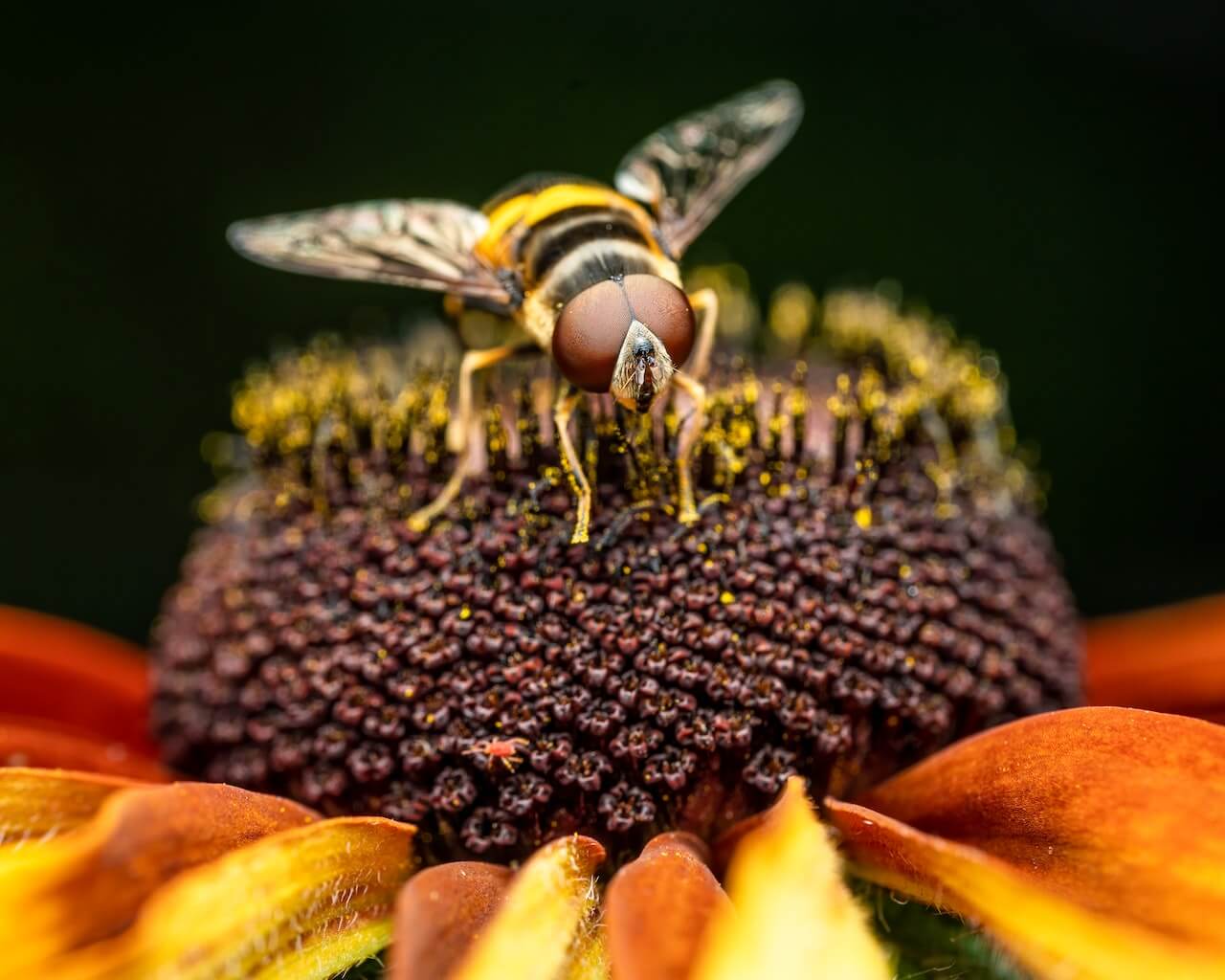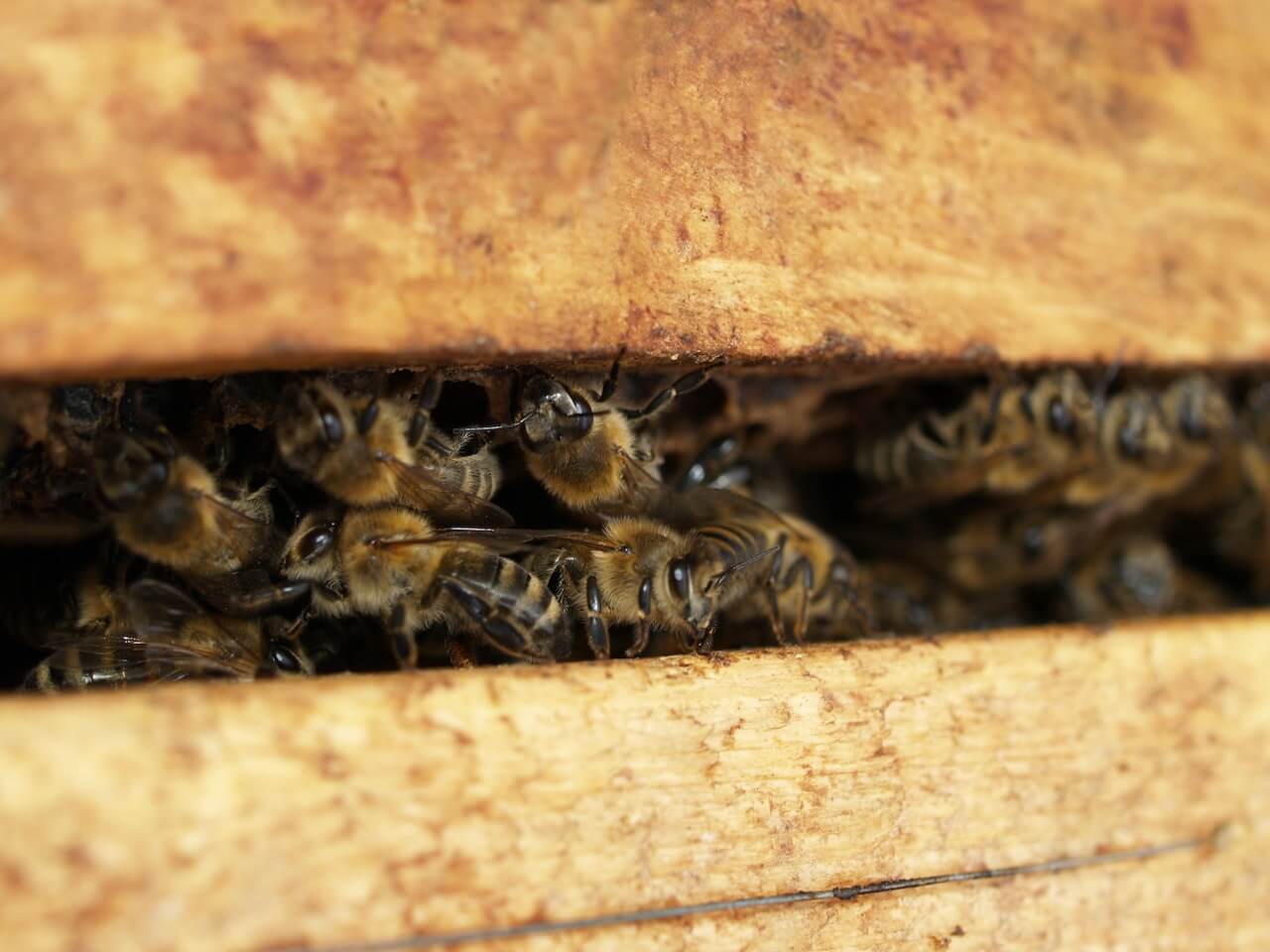Stinging insects are a common sight in the Pacific Northwest, and they are usually most active during spring and summer. Remember that bees and wasps play an important role in our ecosystem both as pollinators and predators of insect pests. At Interstate Pest Management, we want to point out the differences between the types of bees and wasps found in the Greater Portland and Vancouver areas and help you control potential backyard problems and avoid getting stung.
Types of Stinging Insects in the Pacific Northwest
Wasps, yellow jackets, hornets, and other stinging insects are common summertime pests and their stings can be more than just a nuisance for those of us living in Southwest Washington and Northwest Oregon. Stinging insects can be dangerous. According to PestWorld, they can send more than 500,000 people to the emergency room each year. Those with allergies to stings are the most at risk.
Remember that certain types of stinging insects pose more serious threats than others. In order to determine the risk to your family, it’s important to identify the type of insect, especially for wasps and yellow jackets. Here are the types of stinging insects that you may see in the Greater Portland area.

Identifying Stinging Insects
Bald-faced hornets
Bald-faced hornets are common stinging insects here in the Pacific Northwest, and they are very common in the late summer months. They are beneficial to our local ecosystem because they control pest insects but being near their nests can pose a threat to your safety.
- Size: ¼ – 1”
- Appearance: Similar to yellow jackets but they have distinct ivory-white markings on their faces
- Nests: Aerial and built out of paper cartons, usually found on trees, utility poles, or overages. They are quite large – 14” in diameter and 24” in length
Bumblebees
Bumblebees are beneficial to the environment because they pollinate flowers. But remember, they can sting you, so they are a threat. Bumblebees have distinctive qualities that make them easy to identify:
- Size: ¼ – 1”
- Appearance: Black and yellow markings and fuzzy overall
- Nests: Built out of pollen clumps in the ground
Carpenter bees
Like carpenter ants, carpenter bees like to bore into wood to make nests. They do not eat the wood, but they can cause structural damage because they will return to the same tunnels each year to lay their eggs. They are territorial, but for the most part, their stingers are for show:
- Size: ½ – 1”
- Appearance: Confused with bumblebees but have a bare, shiny abdomen
- Nests: They bore into wood and can cause structural damage over time
A trained pest control professional will be able to correctly identify a local pest species and its threats for you. You can always check out our pest library to learn more about the different types of common pests in Portland and the surrounding area.
Honeybees
Honeybees are social insects and you can usually find them in the spring and early summer, pollinating plants and trees. They are not usually aggressive, and because they have barbed stingers, they can only sting once.
- Size: ½ ” – ⅝ “
- Appearance: Golden yellow with brown bands
- Nests: They live as colonies in hives with 20,000 – 80,000 individuals
Mud daubers
Mud daubers are common in the U.S., including here in the Pacific Northwest. They are most active in the summer months, and they are not aggressive, only stinging if they’re in danger. In fact, they are helpful for spider control.
- Size: 1”
- Appearance: Long and slender, usually black in color with pale markings or a metallic luster
- Nests: They are solitary wasps that don’t live in colonies but construct nests of mud
Paper wasps
Paper wasps are common pests found throughout the U.S. and they are moderately aggressive, stinging if provoked. They can enter your home through attic vent screens or roof shingles.
- Size: ¾ – 1 ¼ “
- Appearance: Brownish in color with yellow or reddish markings
- Nests: They get their names from the paper-like material from which they construct their nest. Their nests are umbrella-like in shape, resembling an upside-down paper cone.
Yellowjackets
Stinging yellow jackets are some of the most dangerous stinging insects in the U.S. because they are unpredictable and sting if their nests are disturbed. They are active during the late summer and fall.
- Size: ⅜ – ⅝ ”
- Appearance: Black and yellow color pattern
- Nests: They live in nests constructed of paper cartons, which can grow to be basketball-sized.

How to protect yourself and your family from stinging insects
The best way to protect you and your family from bees, wasps, hornets, and yellowjackets is to make sure that your home is free from hives and nests. Check your property on a regular basis including the exterior of your home, any landscaping, sheds, or other structures. Places these pests like to frequent include eaves, overhangs, and the underside of porches and decks.
Other stinging insect protection and prevention tips include:
- Keep all food covered when dining outside until you’re ready to eat.
- Eliminate any standing water in or around your home.
- Keep all trash cans covered and sealed with a lid.
- Avoid wearing sweet-smelling perfumes and colognes when spending time outside.
- Remain calm and quiet when approached by a stinging insect. Swaying, swatting, or swinging may provoke an attack.
Should you remove a bee or wasp’s nest on your own?
Never remove a bee, wasp, or hornet’s nest alone. A colony can be very defensive and attack a group when threatened. This can be extremely dangerous. A licensed local pest control company can help relocate or remove a hive in a safe manner.
Why Call a Professional Bee, Hornet, and Wasp Exterminator?
It’s important to know when to call a hornet and wasp exterminator. There are do-it-yourself (DIY) bee, hornet, and wasp control methods, and while these off-the-shelf solutions may be cheap, they are not really safe and effective. Remember that these pests can be very aggressive if you, your family, or your pet gets too close to their nest. If a stinging insect is a threat to your family or your business, contact a professional hornet and wasp exterminator immediately.
Professional Bee, Wasp, Hornet Control & Removal in Portland, Vancouver, Olympia, and Kelso
A local professional pest control company will help you with bee and wasp control. This includes:
- Bee and wasp identification
- Bee, wasp, and hornet nest removal
- Identifying when you have a bee issue
- Preventive services to keep bees, wasps, and hornets from coming back
Interstate Pest Management is headquartered in Kelso, WA and we offer eco-friendly hornet and wasp control. This means we are capable of removing any nest, no matter the location. We also don’t kill honey bees; we will refer to a beekeeper to come and take them. If you’re interested in learning more, get in touch with us here or call us at (503)-832-4997.